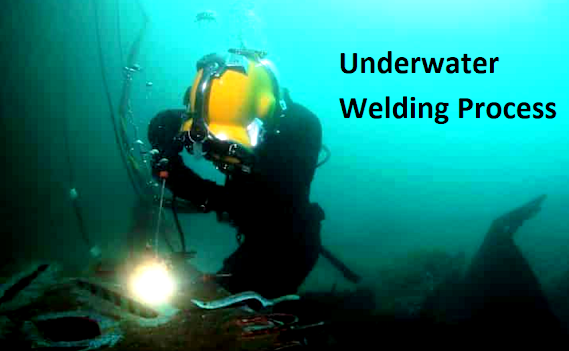Underwater Welding Process
The Underwater Welding Process is a challenging task that involves welding two pieces of metal together underwater, often in marine environments such as shipyards, offshore oil platforms, and underwater pipelines.
The two primary types of underwater welding are wet welding
and dry welding, which use different techniques to achieve the same goal.
Wet welding is the more
commonly used of the two methods, and it involves using an electrode to create
an arc between the metal surfaces being welded. The welder is surrounded by
water, and the electrode is covered with a waterproof coating to prevent it from
short-circuiting. The welder must wear protective gear and use special
equipment to avoid electrocution.
Dry welding is a more
complex process that involves creating a dry environment around the weld site.
This can be achieved by using a dry chamber or by creating a bubble of dry air
around the welder using a special suit. The welding process is similar to wet
welding, but the dry environment allows for better control over the welding
process and reduces the risk of defects in the weld.
Underwater welding is a
highly skilled and specialized profession that requires extensive training and
experience. It is essential to use appropriate safety measures and follow
proper procedures to avoid accidents and ensure the quality of the weld.
Underwater welding
Underwater welding is a
specialized type of welding that takes place underwater, typically in marine
environments such as shipyards, offshore oil platforms, and underwater
pipelines. This process is used to join two pieces of metal together, repair
metal structures or pipelines, and perform other types of metalwork.
There are two primary types of underwater welding: wet welding and dry welding.
Wet welding is the most
common method of underwater welding. It involves the use of an electrode to
create an arc between the two metal surfaces being welded. The welder is
surrounded by water and uses special equipment and protective gear to prevent
electrocution. The electrode is covered with a waterproof coating to prevent it
from short-circuiting.
Dry welding, on the other
hand, involves creating a dry environment around the weld site. This can be
done using a dry chamber or by creating a bubble of dry air around the welder
using a special suit. Dry welding offers better control over the welding
process and reduces the risk of defects in the weld, but it is more complicated
and expensive than wet welding.
Underwater welding requires
specialized training and experience, and welders must be certified by a
recognized authority before they can work on underwater projects. The process
also requires careful safety procedures to avoid accidents and ensure the
quality of the weld.
Underwater welding salary
The salary for underwater
welders can vary depending on a number of factors such as experience,
qualifications, location, and the specific project they are working on.
Generally, underwater welders can expect to earn a higher salary than
conventional welders due to the additional training and specialized equipment
required for underwater welding.
According to the Bureau of Labor
Statistics, the median annual wage for commercial divers, which includes
underwater welders, was $56,750 in May 2020. However, salaries can range from
$30,000 to over $100,000 per year, depending on experience and other factors.
Underwater welders may also
receive additional compensation for working in hazardous or remote environments
or for working on projects that require extended periods of time away from
home. Some may also receive benefits such as health insurance, retirement
plans, and paid time off.
It's important to note that Underwater Welding can be a hazardous job, and safety is paramount. Welders
must undergo extensive training and certification to work in this field, and
they must follow strict safety protocols to prevent accidents and injury.







0 Comments